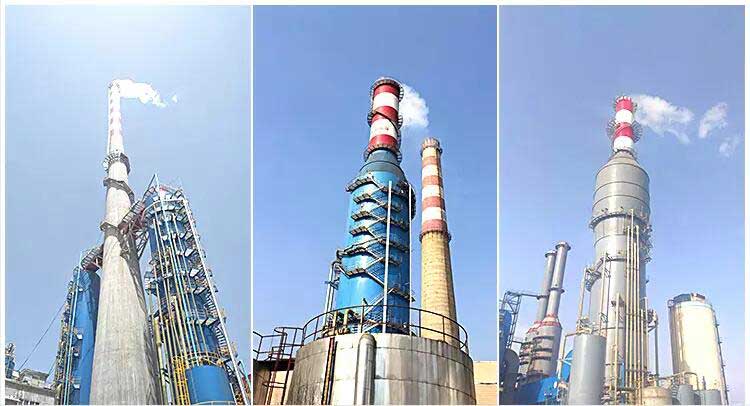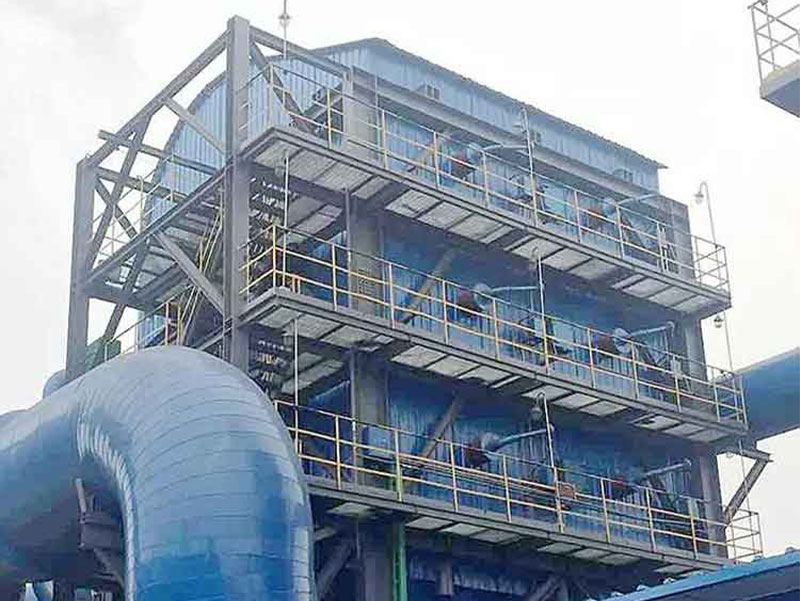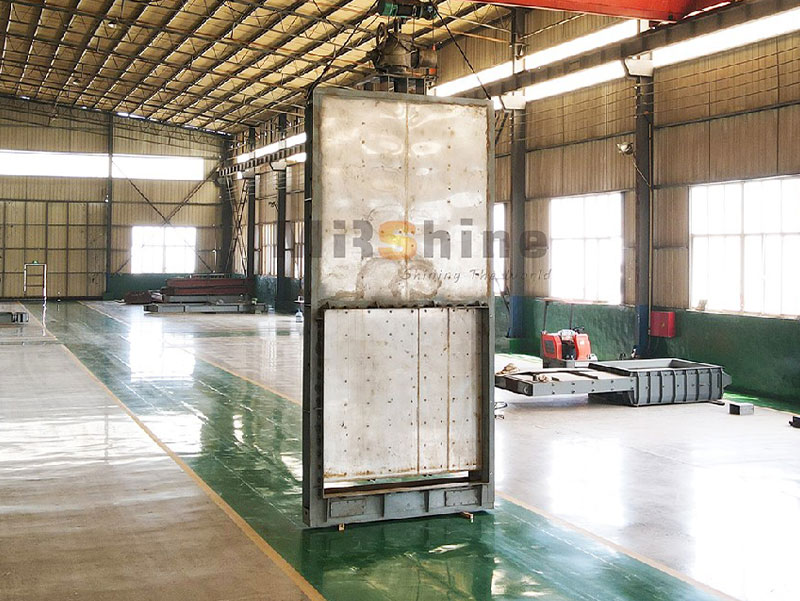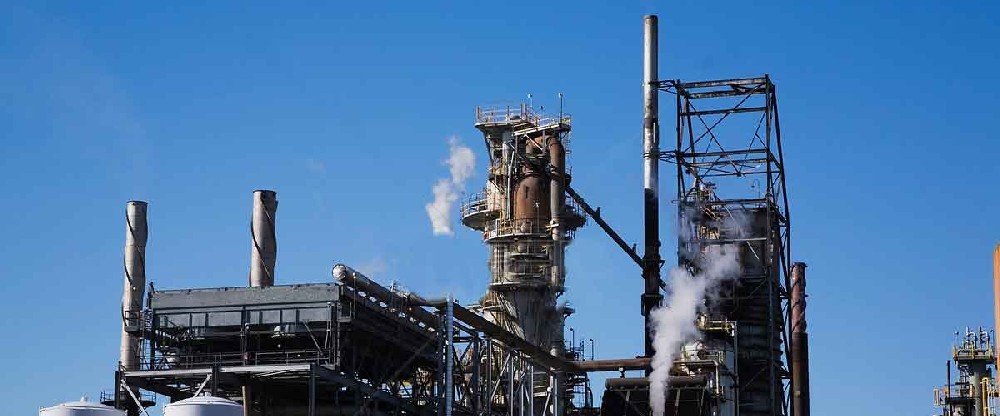Commonly used coke oven flue gas desulfurization and denitrification methods mainly include SDS dry desulfurization + medium and low temperature SCR denitrification, SDA (Na) semi-dry desulfurization + medium and low temperature SCR denitrification, SDA (Ca) semi-dry desulfurization + GGH- medium and low temperature SCR denitrification And activated carbon dry desulfurization and denitrification process, etc.
2.1 SDS dry desulfurization process
The high-efficiency desulfurizer (with a particle size of 20-25 μm) is sprayed into the flue through the SDS dry deacidification injection and uniform distribution device and is heated and activated in the flue. Its specific surface area increases rapidly and occurs after fully contacting the flue gas. Physical and chemical reactions, acidic substances such as SO2 in the flue gas are absorbed and purified. The development background of this technology is the HCl removal dry process system developed by the waste incineration industry. The main component of the by-product is NaCl, which can be recycled as raw material for the production of soda ash. After that, the SDS dry deacidification technology developed rapidly in Europe, and its supporting injection system and grinding system were developed one after another. Currently in the European market, this process is mainly used for waste incinerator tail gas deacidification, but this technology has achieved great success in other industries including coking, glass manufacturing, coal-fired power plants, hazardous waste incinerators, diesel power generation, biomass power generation, cement, etc. Good application effect.
The advantages of SDS dry desulfurization + medium and low temperature SCR denitrification process are high desulfurization and denitrification efficiency, no temperature drop, no water operation, low investment, small footprint, less by-products, low power consumption, no corrosion, simple equipment, easy operation and maintenance , the amount of desulfurization by-products is small, and the content of sodium sulfate is high; the disadvantage is that a small amount of desulfurization by-products will be produced, which needs to be comprehensively utilized.
2.2 SDA semi-dry desulfurization process (including Na method and Ca method)
The spin spray drying (SDA) desulfurization technology was developed by the Danish Niro company in the early 1970s. The desulfurization process is to add water to CaO or Na2CO3 to form Ca(OH)2 slurry or Na2CO3 solution with a solid content of 20%~25%, and atomize the solution into 30~80μm droplets through the atomizer at high speed and spray them into the absorption tower. In the tower, Ca(OH)2 slurry or Na2CO3 solution droplets (absorbent) quickly absorb SO2 in the flue gas to achieve the purpose of removing SO2. At the same time, the heat of the coke oven flue gas instantly dries the liquid droplets sprayed into the tower, making it a powdery dry solid, which is collected by the bag filter. The desulfurization process is simple, and the absorption tower is an empty tower structure.
The advantages of SDA (Na) semi-dry desulfurization + medium and low temperature SCR denitrification are high desulfurization efficiency, no waste water generation, low water consumption, low power consumption, and no corrosion; the disadvantages are that the desulfurizer is easy to crystallize, maintenance is difficult, and by-products are difficult to recycle. . The advantages of SDA (Ca) semi-dry desulfurization + GGH- medium and low temperature SCR denitrification process are medium desulfurization efficiency, no waste water generation, low water consumption, low power consumption, and no corrosion; the disadvantage is that it occupies a large area and the flue gas temperature decreases first After rising, the energy consumption is high and the by-products are difficult to use.
2.3 Activated carbon dry desulfurization and denitrification process
Based on the principle of physical-chemical adsorption, activated carbon absorbs SO2, H2O and O2 in the flue gas, and then catalyzes the reaction to generate sulfuric acid, which is then migrated to the micropores for storage. The ammonia water in the flue gas undergoes a reduction reaction to generate N2 and H2O. Activated carbon releases active adsorption sites through the regeneration system to continue to adsorb SO2, and the SO2-containing flue gas discharged from the regeneration system enters the by-product recovery system, and SO2 can be processed into various sulfur products.
Activated carbon will produce wear and chemical consumption during the regeneration process, so new activated carbon needs to be replenished regularly, and the worn activated carbon powder can be returned to the coal blending section for reuse.
The activated carbon dry desulfurization and denitrification process uses the adsorption of activated carbon to absorb SO2, particulate matter and NOx in the flue gas, so as to achieve the purpose of simultaneous desulfurization, denitrification and dust removal. The disadvantage is that the temperature of the flue gas needs to be lowered to below 150 ℃; the desulfurization by-products contain sulfuric acid and produce polluted wastewater at the same time, which requires a large one-time investment and high operating costs.
In summary, regardless of the advanced nature of the process technology (desulfurization, denitrification efficiency), or the practicability of the process technology, floor area, investment cost, waste water, by-product utilization, etc., SDS dry desulfurization And the medium and low temperature SCR denitrification process is the best process technology suitable for coke oven flue gas purification. Its configuration is reasonable and the control level has reached the international advanced level, which can ensure the long-term, safe, stable and continuous operation of the desulfurization and denitrification system.










